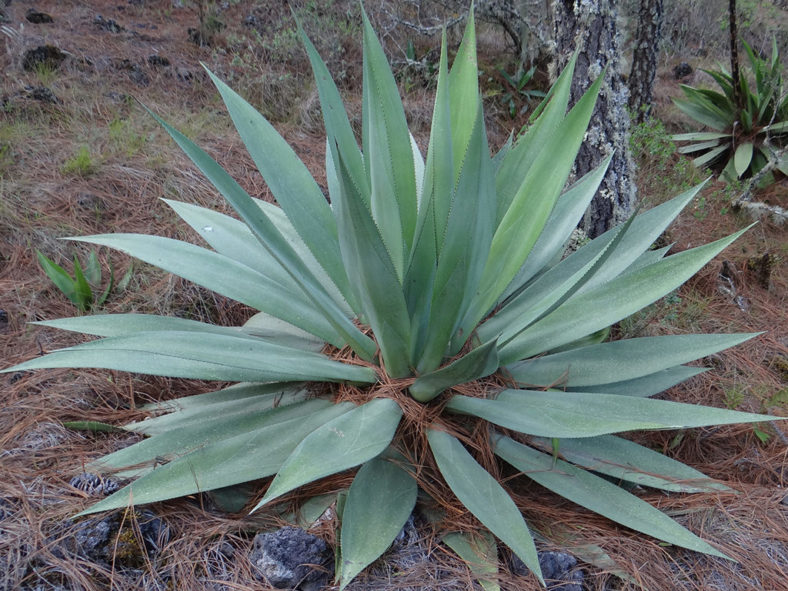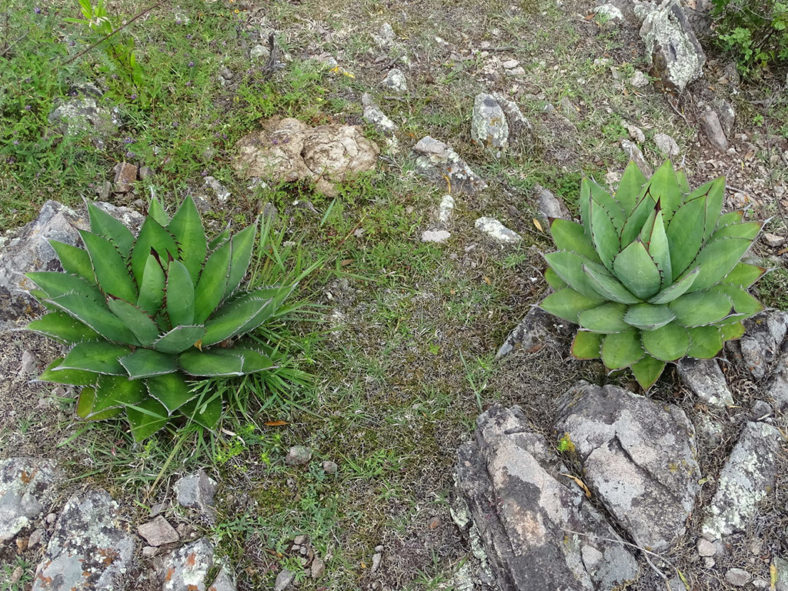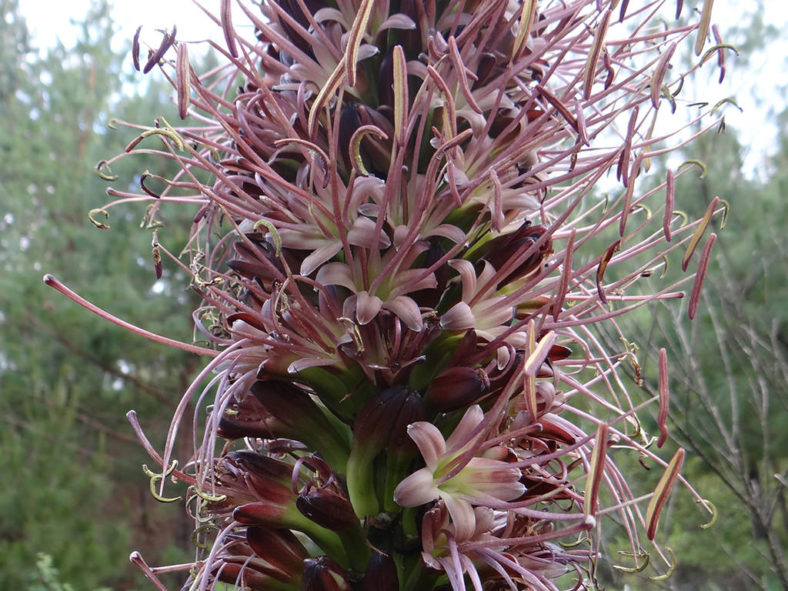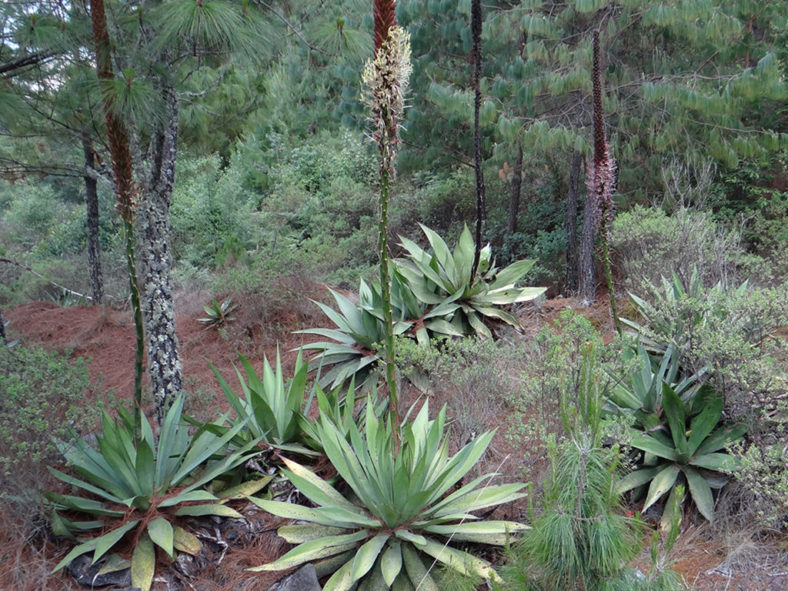Scientific Name
Agave obscura Schiede ex Schltdl.
Common Name(s)
Century Plant, Dark-flowered Agave, Hardy Century Plant, Red-flowered Hardy Agave, Whale's Tongue Agave
Synonym(s)
Agave densiflora, Agave polyacantha var. densiflora, Agave polyacantha var. xalapensis, Agave xalapensis
Scientific Classification
Family: Asparagaceae
Subfamily: Agavoideae
Genus: Agave
Etymology
The subspecific epithet "obscura (ob-SKEW-ruh)" means "dark, dusky, shadowy" and refers to the dark purple or red flowers of the species.
Origin
Agave obscura is native to Mexico Mexico (from San Luis Potosí to Oaxaca). It grows mainly in oak and pine-oak forests or volcanic lava flows with pines at elevations ranging from 4,000 to 8850 feet (1,200 to 2,700 m).
Description
Agave obscura is a stemless succulent that forms a large rosette of broad, green leaves with red-toothed margins and an extended apical spine. The rosette can grow up to 3.3 feet (1 m) in diameter. The leaves are broadly linear to ovate, measuring up to 16 inches (40 cm) long and 3.2 inches (8 cm) wide.
The flowers are dark purple, red, or yellow and appear densely arranged in a spiral at the upper fourth of a slender inflorescence that can grow up to 16.4 feet (5 m) tall. The flowers can reach up to 1.6 inches (4 cm) in length. The rosette dies after flowering. However, it sometimes produces several young rosettes around its base that will develop as new plants.

How to Grow and Care for Agave obscura
Light: Like all Agaves, this plant requires full sun to partial shade. If growing A. obscura indoors, choose a bright, sunny window with as much sun as possible. From spring to fall, it loves going outside.
Soil: A. obscura tolerates most soils with good drainage but prefers sandy or rocky soil.
Temperature: During the growing season, it likes warm temperatures, while in winter, when resting, this succulent enjoys cooler temperatures. A. obscura can withstand temperatures as low as 5 °F (-15 °C). USDA Plant Hardiness Zones 7b to 11b, 5 to 50 °F (-15 to 10 °C).
Watering: From spring to fall, water thoroughly when the soil becomes dry. In winter, water sparingly about once a month. Plants in containers require more frequent watering than those in the ground.
Fertilizing: Give your A. obscura a small amount of fertilizer in the spring during the first two years. After that, established plants seem to take care of themselves.
Repotting: If you notice your A. obscura becoming pot-bound, repot it with fresh soil in a pot slightly larger than the old one. Give the plant a week or so to readjust before you water it again.
Propagation: A. obscura is usually propagated by seeds or offsets, sometimes produced during flowering. Sow the seeds in spring. The best time to remove the offsets is in spring and summer.
Learn more at How to Grow and Care for Agave.
Toxicity of Agave obscura
A. obscura is not toxic to humans but may be mildly poisonous to children and pets.
Links
- Back to genus Agave
- Succupedia: Browse succulents by Scientific Name, Common Name, Genus, Family, USDA Hardiness Zone, Origin, or cacti by Genus
Photo Gallery
Click on a photo to see a larger version.


